#wombo dream art commun
Explore tagged Tumblr posts
Text
“The Alpha & The Wolf”
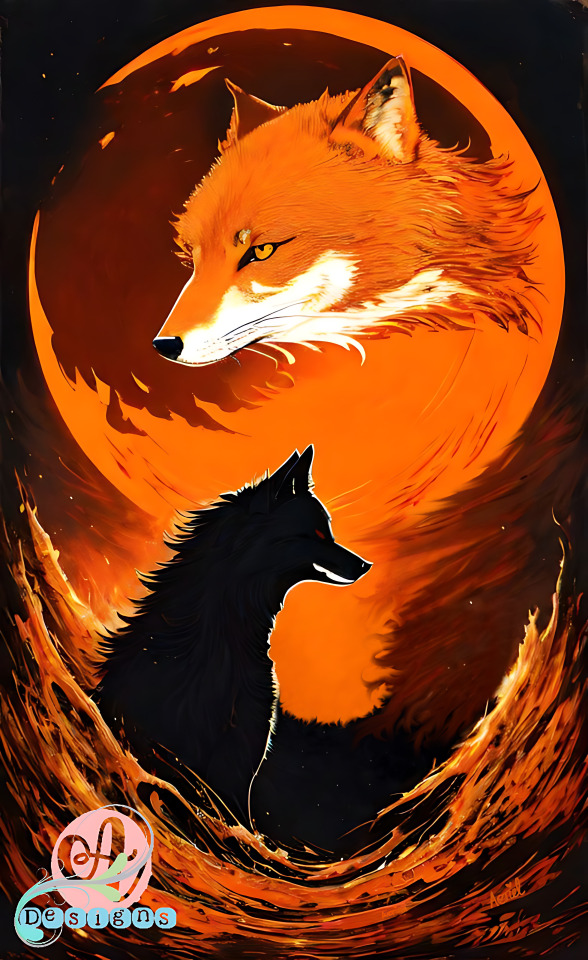
Created with Dream AI (WOMBO) and edited with Rebelle 5, etc ❤️
Inspired by one of my dearest ships, Sterek ^^
#sterek#My Creations#my art#artist#ai art#digital art#digital illustration#digital artwork#ai#ai artwork#ai art community#dream ai#wombo dream
102 notes
·
View notes
Text

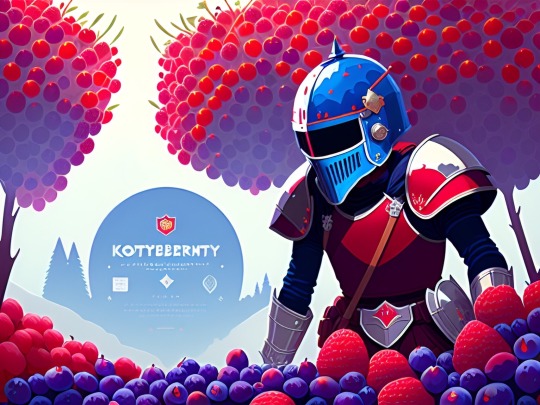


knight of berries
#ai art#ai art community#ai assisted art#ai art gallery#ai artist#ai artwork#aiartistcommunity#ai art generation#ai artists#aiartlovers#aiartist#aiartsociety#aiartdaily#ai art generator#wombo dream#dream by wombo#tarot deck#tarot design#tarot art
4 notes
·
View notes
Text
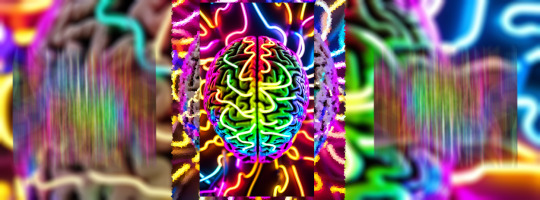
You're already the voice inside my head.
#wombo art#wombo.ai#wombo app#wombo dream#dream by wombo#womboai#wombodream#aiartcommunity#ai artwork#ai art community#aiartist#wombo#ai generated#i miss you#blink 182#lisa frank#rainbow#brain#electric#love#shocks#connections#neon#mind#head#Spotify
0 notes
Text
Perfect Digital Art Strategy for 2024 and Beyond: Embracing AI and Pushing Boundaries
The digital art landscape is poised for an even more explosive evolution in 2024 and beyond. To navigate this exciting world and carve your own niche, here's a blueprint for a perfect digital art strategy:
1. Embrace AI as a Collaborative Force:
AI Art Tools: Don't fear AI, embrace it as a collaborator. Experiment with tools like Midjourney, Dall-E 2, Artbreeder, NightCafe Creator to generate initial concepts, explore new styles, and break creative block.
Refine the Output: Use your artistic skills to guide and refine the AI's suggestions, adding your unique touch and vision to create truly original artwork.
Human-AI Fusion: Blend traditional techniques like painting or 3D modeling with AI-generated elements to create hybrid masterpieces that transcend limitations.
2. Push the Boundaries of Creativity:
Explore Emerging Technologies: Dive into cutting-edge avenues like VR/AR painting, interactive installations, and generative NFT art to stay ahead of the curve.
Experiment and Diversify: Don't stick to one style. Keep experimenting with different mediums, techniques, and genres to unlock your artistic potential and surprise your audience.
Challenge Conventions: Use your art to provoke thought, question norms, and inspire conversation on social and environmental issues.
3. Build a Strong Online Presence:
Showcase Your Work: Utilize platforms like ArtStation, Instagram, Behance, and NFT marketplaces to reach a wider audience and connect with collectors.
Engage with the Community: Actively participate in online forums, discussions, and events to network with other artists, learn from each other, and build a loyal following.
Leverage Social Media Tools: Utilize social media analytics and marketing strategies to promote your work effectively and reach your target audience.
4. Monetize Your Passion:
Explore NFT Opportunities: Explore the vibrant world of NFTs to sell your digital artwork and create new income streams.
Offer Commissions and Collaborations: Partner with brands, influencers, or other artists for commissioned work and creative collaborations.
Create Online Courses and Tutorials: Share your knowledge and expertise by teaching online courses or workshops on digital art and AI tools.
AI Tools Recommendations (ideas):
Concept Generation: Midjourney, Dall-E 2, Dream by WOMBO, NightCafe Creator.
Image Editing and Upscaling: Photoshop, Gigapixel AI, Topaz Labs tools.
3D Modeling and Animation: Blender, Maya, Cinema 4D, Adobe Substance 3D Painter.
VR/AR Creation: Tilt Brush, Quill VR, Gravity Sketch.
Interactive Art and Generative NFTs: Art Blocks, fxhash, Crypto.Art, Async Art.
Remember: This is just a framework, adapt it to your unique artistic vision and goals.
The key is to embrace innovation, push boundaries, and stay constantly curious. Your art, infused with your own voice and fueled by AI's potential, will shine in the vibrant future of digital art.
PREDRAG PETROVIC DIGITAL ART STRATEGIST

#digitalart#digitalstrategy#digitalstrategy2024#digitalartstrategy#digitalartstrategist#aiart#aiartstrategy#aiart2024#SEO²#PREDRAG PETROVIC
2 notes
·
View notes
Text
The Best AI Image Generators in 2024

Particularly in the area of digital art, contemporary technology is advancing quickly. Numerous digital creations have been showcased as artistic manifestations. The digital image generator is a helpful tool at work.
This is being brought about by advancements in artificial intelligence and machine learning.A number of the best picture generators in 2024 have become well-known because of their cutting-edge features, intuitive user interfaces, and usage of cutting-edge technology.
As said in 15 Best AI Image Generator Tools To Try in 2024, the image generators can be as follows:
1) MidJourney
Among the top AI picture creators in 2024 is MidJourney. It creates realistic-looking graphics from text prompts using AI programming. MidJourney does not provide a free trial, in contrast to many other AI marketing products.
Best For:
High levels of technical control over image production
Extensive customization options
Advantages:
Accessible via Discord web browser or mobile app
Includes beginner-specific channels
Active community support and inspiration
Disadvantages:
Issues with creating hands and feet
Potential technical challenges
High costs
· Possible poor user experience
Price:
Plans start at $10 per month
*For the most accurate and up-to-date pricing and service details, please refer to MidJourney directly.
2) PhotoSonic
Within the WriteSonic AI network, PhotoSonic is a web-based tool that combines workflow principles that are easy to use with latent diffusion to produce high-quality pictures.
Best For:
Users with a WriteSonic account can access its features.
Ideal for generating and producing large volumes of images for a monthly fee.
Advantages:
Free to start.
AI-generated photos come with a common license.
Enhances existing images.
Utilizes latent diffusion to create detailed pictures.
Disadvantages:
Can be difficult to use at times.
Requires expertise in image creation.
Price:
Paid plans start at $16 per month.
3) Nightcafe
A vibrant community supports the web-based platform and picture creator known as Nightcafe. Its developer invites users to try out different photo editing techniques.
Best For:
Self-generated designs cater to users of all skill levels, including beginners.
Addresses the challenges of daily photo creation while exploring the capabilities of AI image generators.
Offers advanced controls for experienced image designers.
Advantages:
Fosters a supportive community for motivation.
Enables users to convert photos into AI-generated images.
Features an easy-to-use interface.
Disadvantages:
Relies on expert AI generators for complex situations.
May occasionally lack in work quality and customization.
Price:
Paid plans start at $5.99 per month.
4) Jasper Art
Jasper Artworks is a forward-thinking tool known for its unparalleled flexibility and efficiency. Users can create unlimited types of images for a fixed monthly fee.
Best For:
Quick generation of images using user prompts and integrated Jasper Chat for intuition.
Advantages:
Unlimited image creation for a single monthly fee.
Royalty-free commercial use.
User-friendly interface.
Flexible to work with.
Disadvantages:
High cost.
Faces stiff competition in the market.
Limited exposure for artists.
Occasionally complex to work with.
Price:
· Plans start at $39 per month
Dream by WOMBO Overview
5) Dream by WOMBO
Dream by WOMBO is a platform that excels in generating creative images and seamlessly integrates into your workflow. Accessible via both the website and mobile app, it stands out among AI image generators in 2024.
Best For:
Operating with high capacity and creativity on the go.
Compatible with various social media platforms, offering around 40+ photographs.
Ensures user privacy protection and verification.
Advantages:
Easy usability, including through the mobile application.
Supports over 40 photos.
Provides social media feed integration.
Allows users to continue image generation.
Disadvantages:
Occasional copyright issues may arise.
High dependency on AI tools.
Potential privacy concerns.
Variations in image quality may occur.
Price:
Paid plans start at $19 per month.
6) DeepAI
DeepAI is a powerful platform renowned for its potent artificial intelligence, enabling the creation of authentic imagery, comprehensive style collections, and catering to diverse creative demands.
Best For:
Ideal for professionals seeking the best deals and a platform for creating multiple photos simultaneously.
Advantages:
Focuses on APIs for versatile use.
Capable of generating an infinite number of creative images.
Specializes in AI-produced headshots.
Disadvantages:
Potential privacy concerns may arise.
Some ethical considerations may not be addressed.
Complexity issues may arise.
Price:
Paid plans start at $4.99 per month.
7 Adobe Firefly (Photoshop)
Adobe Firefly is a crucial component of the Adobe Ecosystem that offers creative features integrated into Illustrator, Photoshop, and Adobe Express, potentially revolutionising the way designers work.
Best For:
Integrated creative capacity within various Adobe platforms, facilitating image creation with diverse tools.
Advantages:
Developed by Adobe, ensuring reliability.
Integration across multiple Adobe platforms.
Offers extensive Photoshop capabilities.
Enables creation of entirely new photos.
Disadvantages:
Limited flexibility compared to other tools.
Quality issues may arise.
Requires frequent updates for optimal performance.
Price:
Adobe Express plan starts at $9.99 per month.
Wrapping Up
In summary, this can be said that the AI image generators available in 2024 signify a significant stride forward in the realm of digital technology. Utilising machine learning and artificial intelligence algorithms, these tools facilitate swift access to a wide array of visual enhancements.
The image generators unlock boundless opportunities for creativity, marking a transformative advancement in the field.
For more details please read 15 Best AI Image Generator Tools To Try in 2024 and explore The AI Surf - Find The Best AI Tools & Software. Happy reading
0 notes
Text
Level Up Your Digital Art Game: A Review of "The Complete AI Digital Artist Masterclass" Membership Area
As a digital artist, I've always been fascinated by the potential of artificial intelligence (AI) to enhance my workflow. But where do you even begin? That's where "The Complete AI Digital Artist Masterclass" Membership Area comes in. It's been an invaluable resource for me, and I want to share why.

Unveiling the Magic of AI Art Tools
The Masterclass dives deep into a variety of AI art tools, from popular platforms like Midjourney and Dream by WOMBO to lesser-known gems. Each module provides clear explanations, demonstrations, and hands-on exercises to help you get comfortable using these powerful tools.
I was particularly impressed by the in-depth tutorials on prompting techniques. The instructors break down the cryptic language of prompts, revealing how to craft specific and evocative prompts to achieve the desired artistic effects. This transformed my experience with AI art. I went from getting random results to generating truly stunning and unique pieces.
From Beginner to Master: A Structured Learning Path
The membership area is thoughtfully structured, providing a clear learning path that takes you from beginner to advanced AI artistry. There are modules for complete novices, as well as advanced techniques for experienced digital artists who want to push the boundaries of what's possible with AI.
This structure was perfect for me. I was able to build a strong foundation in the core concepts before diving into more complex applications. The clear explanations and step-by-step guides made learning manageable and engaging.
A Community of Like-Minded Artists
One of the most unexpected benefits of the membership has been the vibrant online community. The forum is a hub for AI art enthusiasts, where you can share your creations, get feedback, and ask questions.
This community aspect has been a game-changer. I've learned so much from seeing other artists' workflows and creative approaches. The supportive and encouraging environment has also boosted my own creativity and motivation.
Beyond the Software: Inspiration and Exploration
The Masterclass goes beyond just teaching you the software. It delves into the artistic side of AI art creation, encouraging exploration and experimentation. There are modules on using AI to generate creative concepts, developing a unique artistic style, and even incorporating AI art into traditional workflows.
This holistic approach has been inspiring. I've discovered new artistic possibilities I never thought of before. The Masterclass has helped me break out of my creative rut and explore new artistic territory.
If you're a digital artist curious about AI art, or even if you're a complete beginner, "The Complete AI Digital Artist Masterclass" Membership Area is an excellent investment. It's a comprehensive learning resource with a supportive community, and it will undoubtedly elevate your digital art game.
See more
0 notes
Text
Avatar, Na'vi, Pandora is in our Dreams

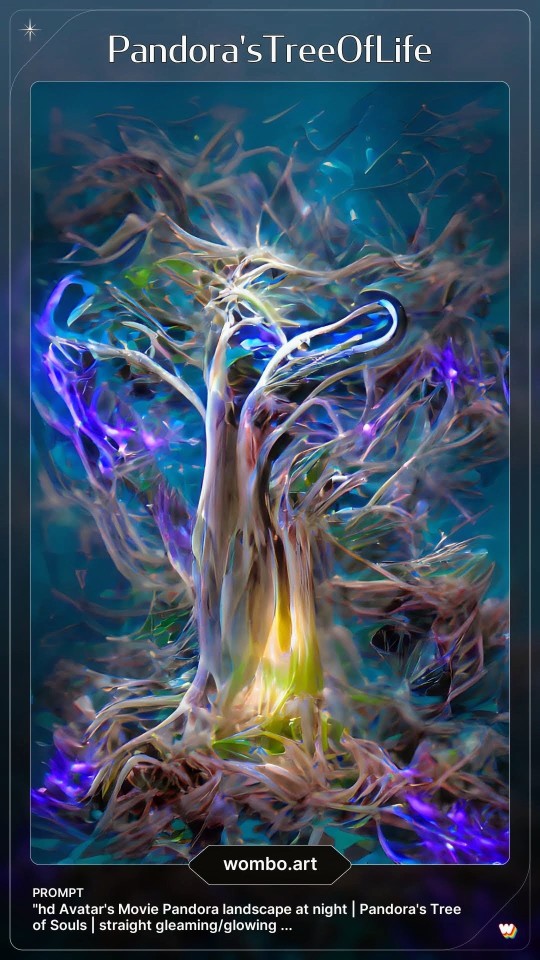
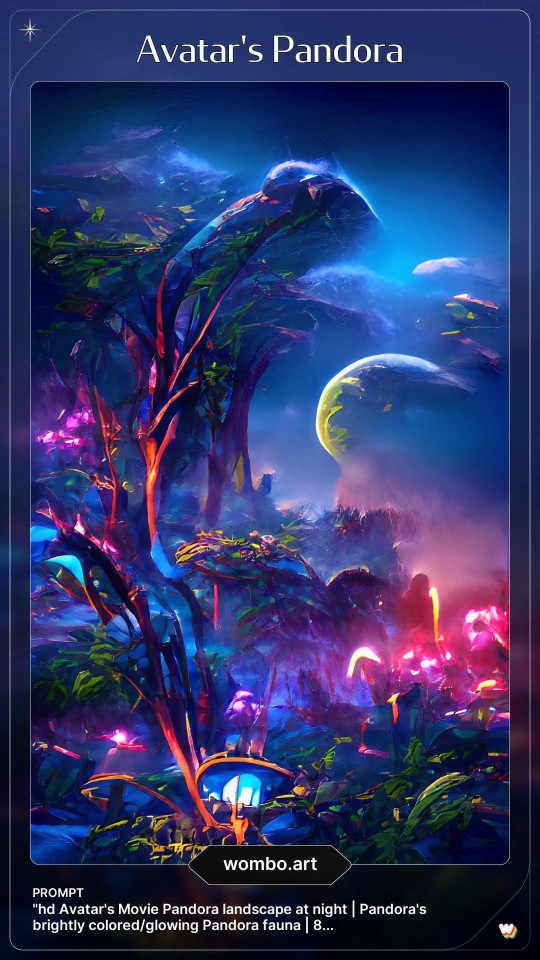

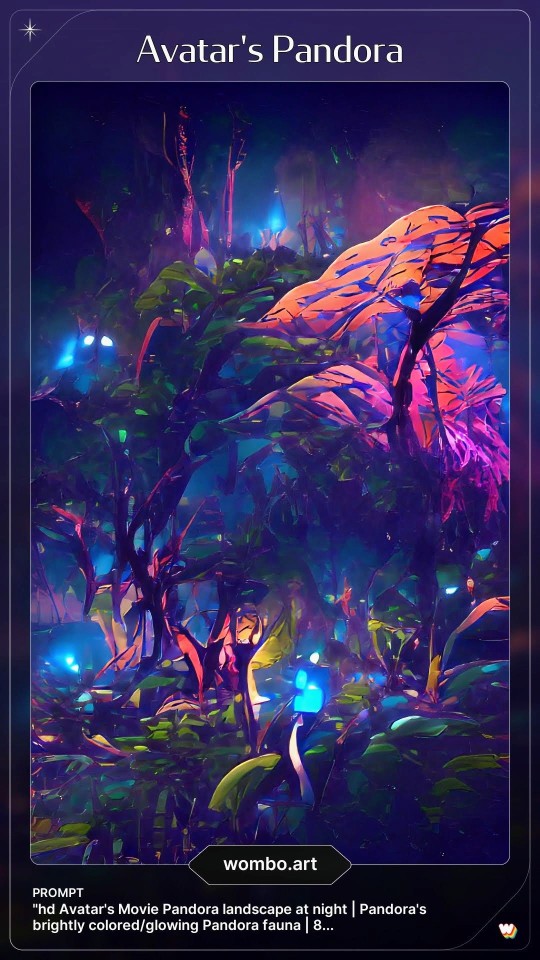
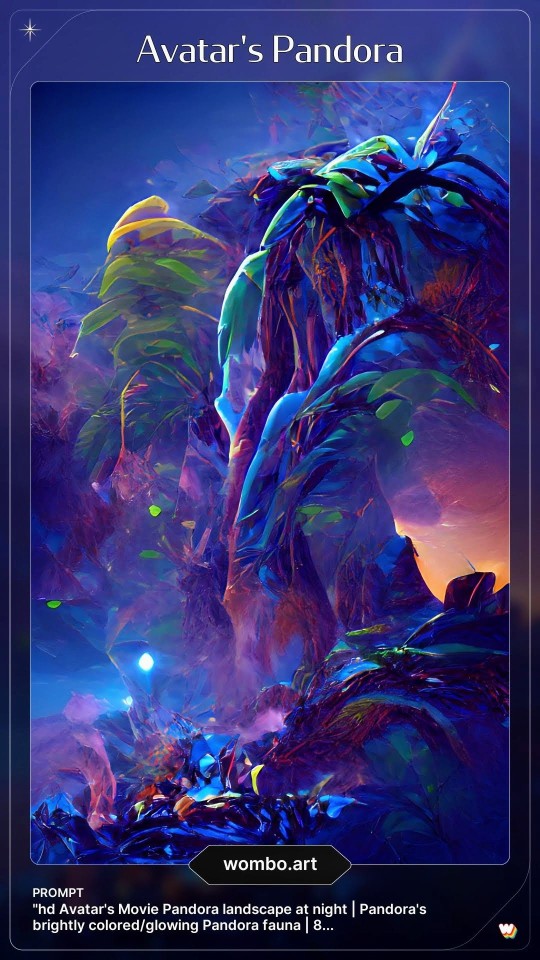
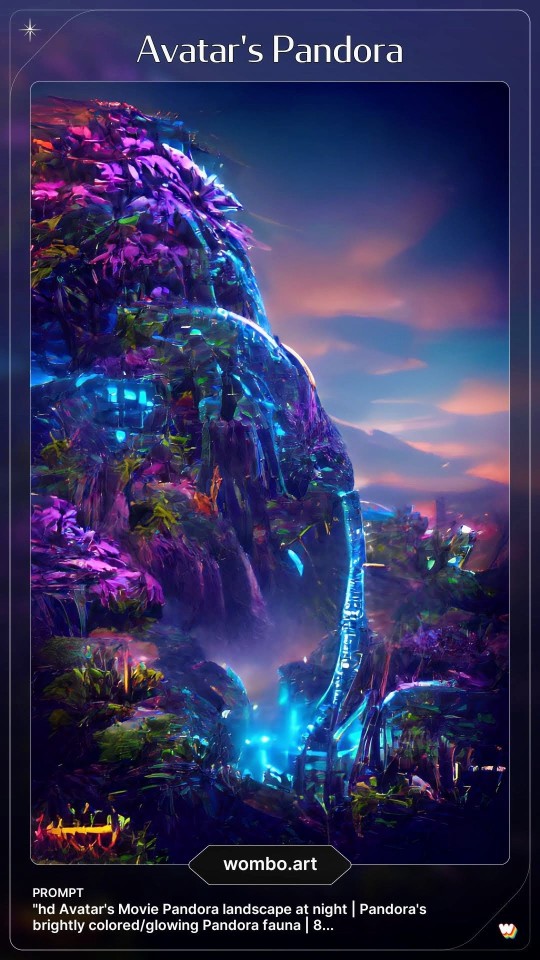
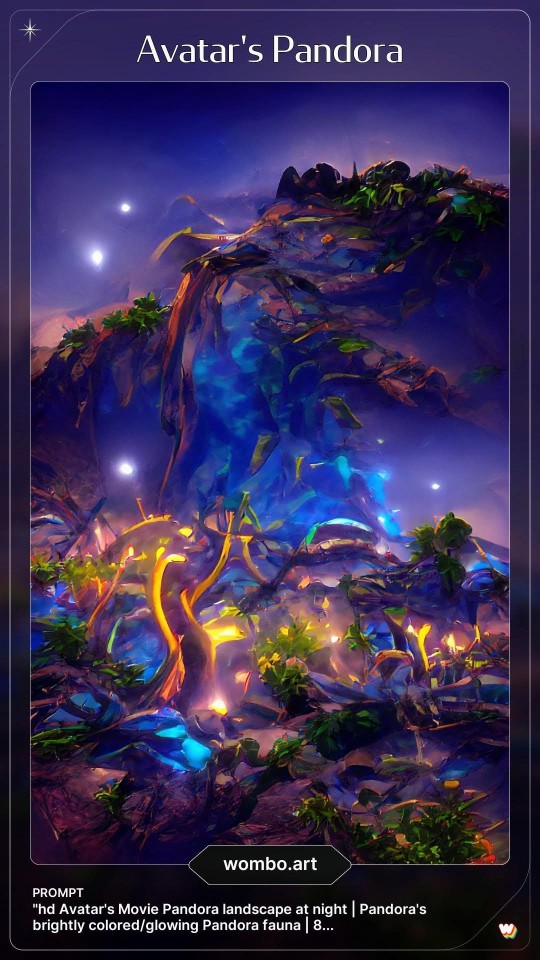
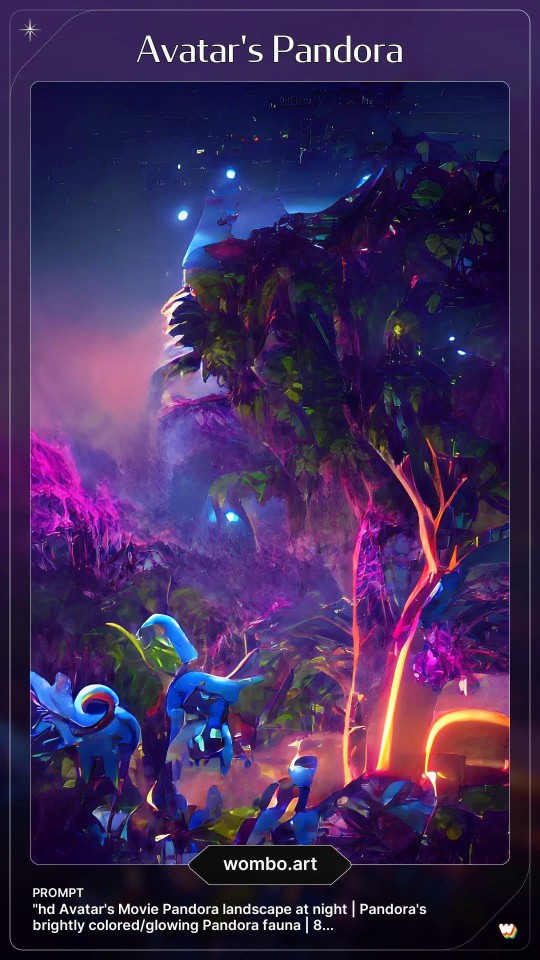
#ai generated#ai generated art#ai art#aiart#aiartcommunity#ai art generator#surreal#wombo dream#wombo.art#wombo.ai#wombo dream art commun#wombo app#wombo dream art community#wombo dream art sharing#avatar fanart#wallpaper
129 notes
·
View notes
Text
#eyefishdream , another fellow talented artistic Dreamer who just joined, this is absolutely 💯 gorgeous 😍

#ai generated#ai generated art#ai art#aiart#aiartcommunity#ai art generator#wombo dream#wombo.art#wombo.ai#wombo dream art commun#wombo app#flowers#surreal#plants#ai artwork#wallpaper
5 notes
·
View notes
Text
Wombo Dream AI Art: Friend Edition!
I've been playing around with this ai art generator app recently and had the idea of using urls as the prompt (I separated the words or hyphens). The numbers I had you pick decided the "style" that it produced. Pretty cool, huh?
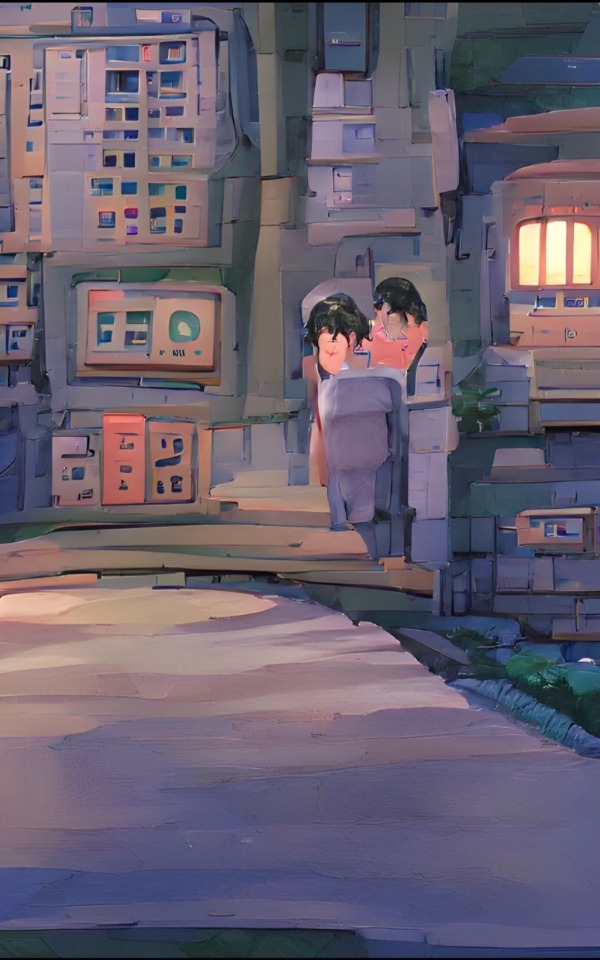
Prompt: @veryblushyswitch
Style: Ghibli

Prompt: @italeean
Style: HD
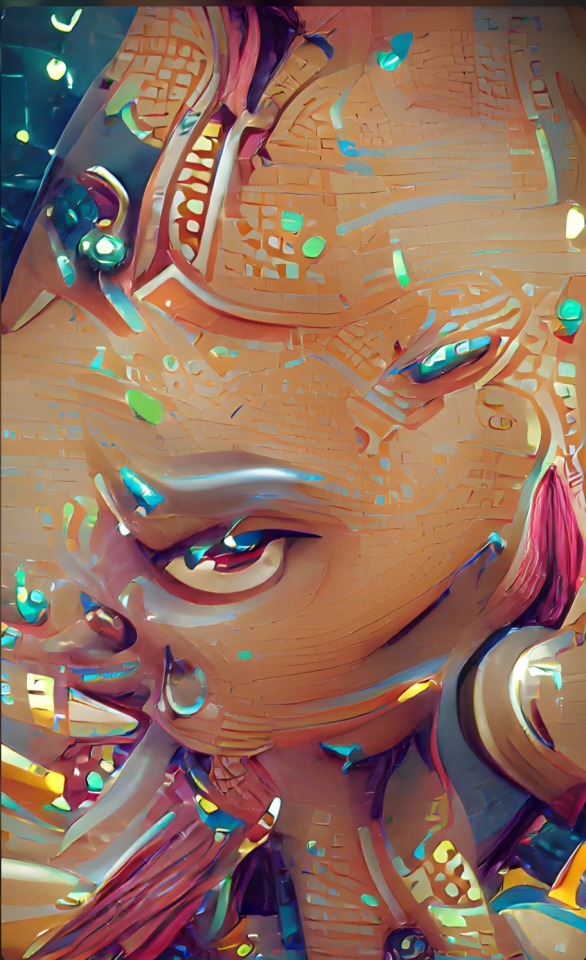
Prompt: @kanene-yaaay
Style: Provenance

Prompt: @softieforjaeminandlouistomlinson
Style: HD

Prompt: @hexalianrebel-blackfeathers
Style: Blacklight
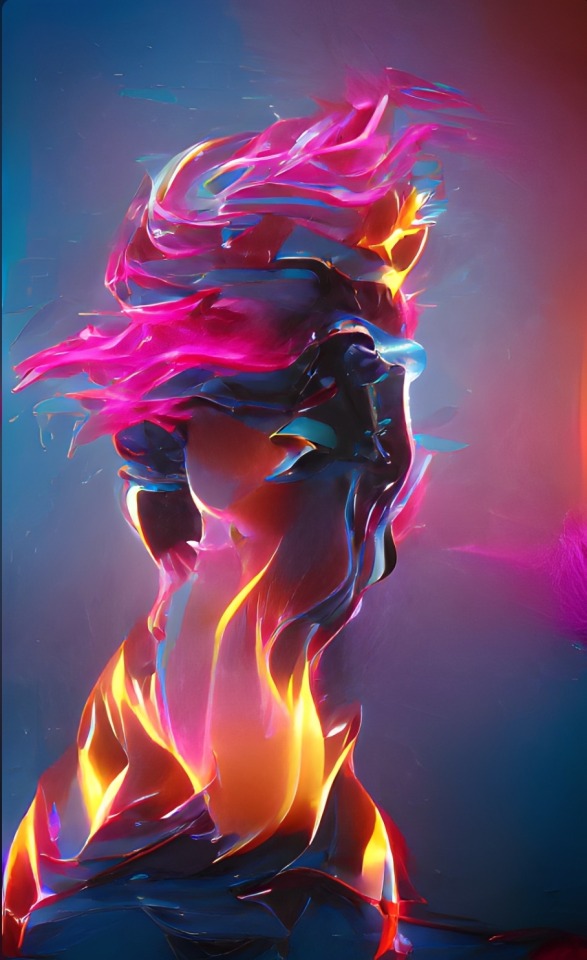
Prompt: "flames tstuff"
Style: Synthwave
#long post#ai art#ai art generator#wombo app#wombo dream#flames stuff#sfw tickling community#sfw tk community#tk community#tickle community
17 notes
·
View notes
Text
Love is Love... ❤️

#ai art#ai artist#ai artwork#ai art community#my creations#my art#dream ai#wombo dream#digital art#digital artist#digital artwork#digital illustration#ai#love is love
3 notes
·
View notes
Text
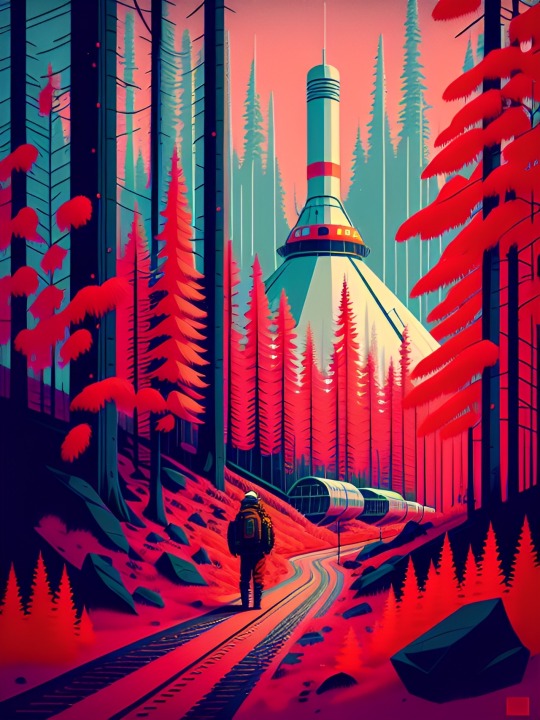
"red forest of chernobyl" for mini-challenge "radioactive" on the wombo discord server
#ai art#ai art community#ai assisted art#ai art gallery#ai artist#ai artwork#chernobyl#red forest#dream by wombo#wombo dream
3 notes
·
View notes
Text
Tears of Iron AUs
Where the sky ends (Kingdom AU)

High fantasy, culture clash, kingdoms, wars, dealing with differences, Stormkeeper X Tears of Iron crossover, infiltrating an enemy kingdom, being of two worlds, outcast, hybrids, bringing people together
Zephyr, Leander, Skye, Kyler, Acacia
Who we are in the dark (Mage gangs AU)

Dark urban fantasy, apocalypse, magic that feeds on pain, demon spirits, mage gangs, vampires, alliances, brutal worst selves, exes, sacrifices
Mae, Crow, Sonny, Ace, Ren, Kai
Season of my enemy (Enemy kings AU)
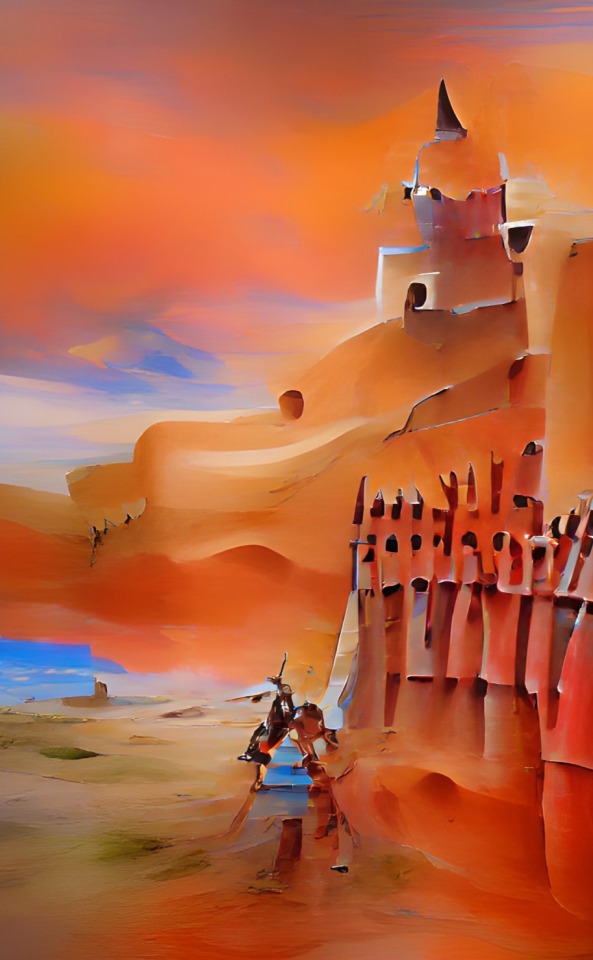
Heroic epic alternate history drama, enemies to friends, brothers, prince and warrior from enemy sides forming an alliance, looking for purpose, steps to closeness
Hirocean, Arius, Synthyche, Yaernos, Cheris
How black stars rise (Tragic AU)

Historical drama, state affairs, kingdoms at war, study of grief, angst, royal family
Part 1 | Part 2 | Part 3
#writeblr#writeblr community#writers on tumblr#wip intro#my AUs#my writing#this has to have a list cause it's getting long#I wanted a summary and a place to save links#wanna do short stories or scenes or some free fun exercises for these during summer#so I'm gonna make some categories and let people now what I'm doing#these wombo arts are just perfect#they go in the vibes and dream visions I have for these#Fiery you expanded my life with wombo for having unique art for my wips ✨
19 notes
·
View notes
Text
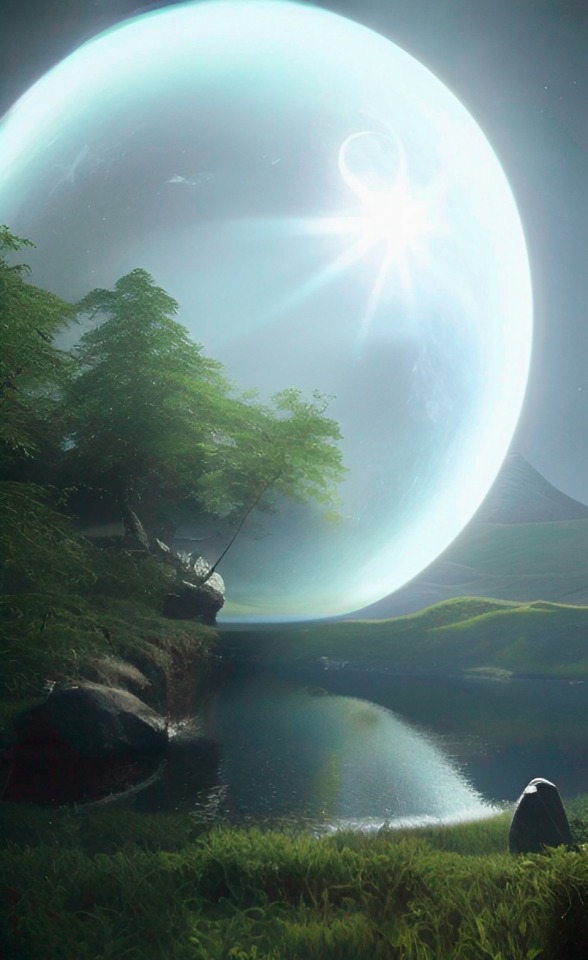

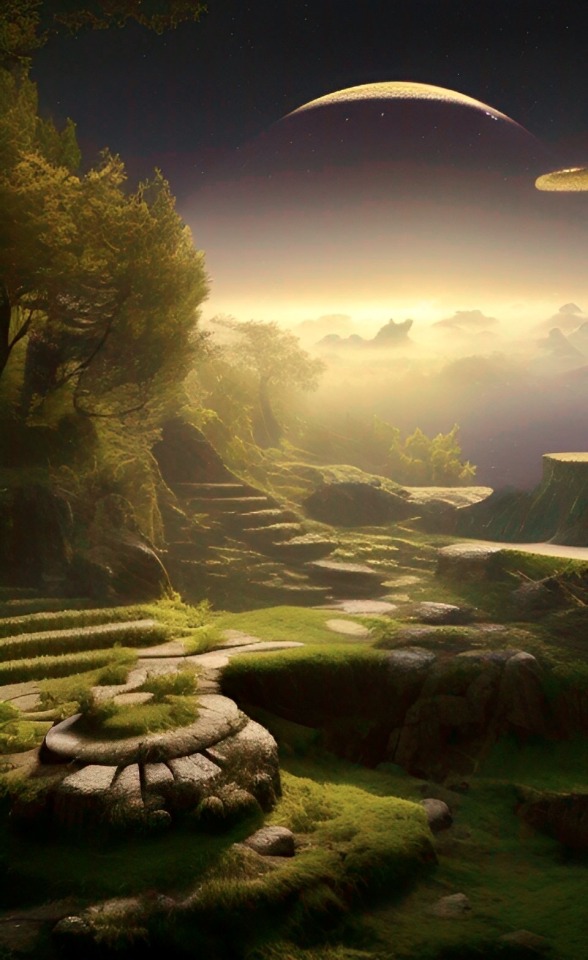
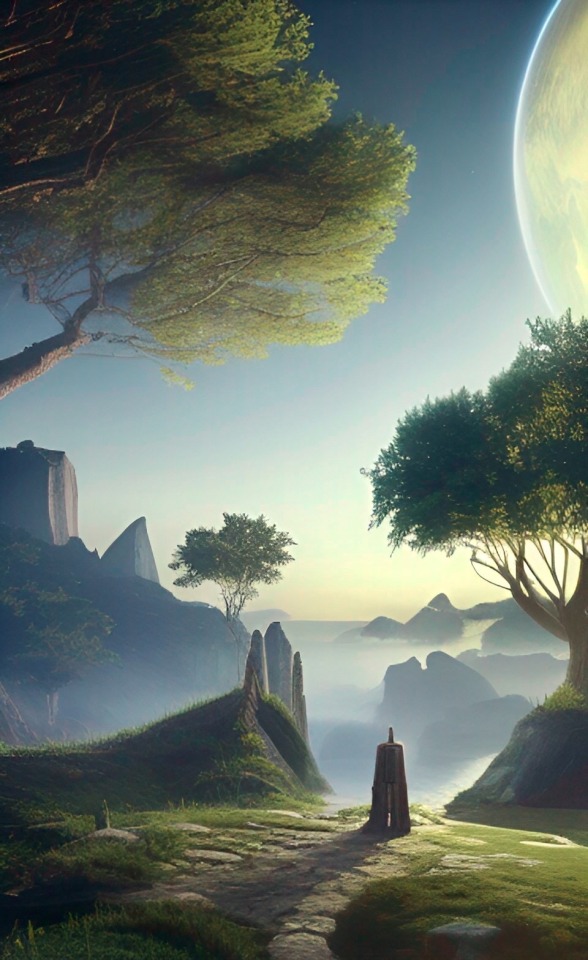

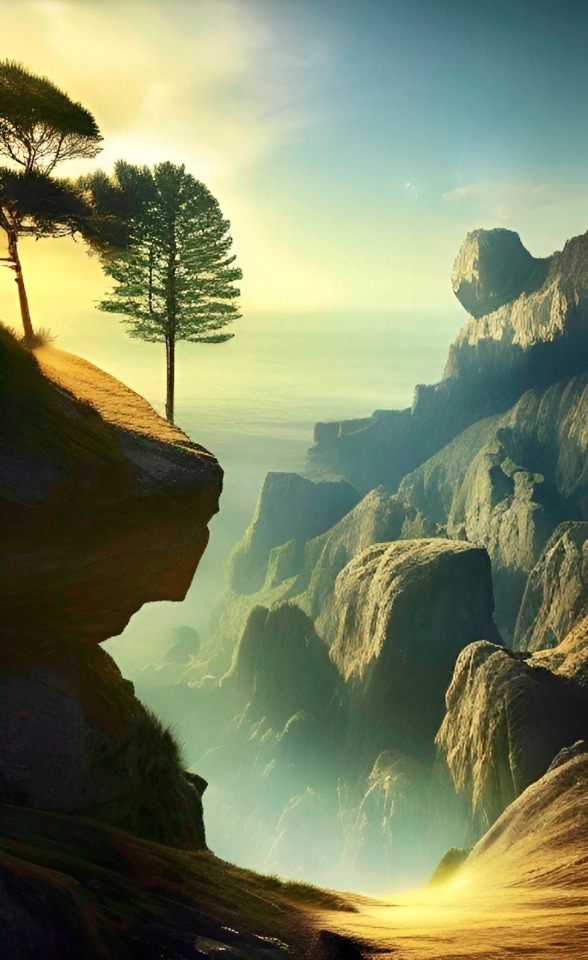


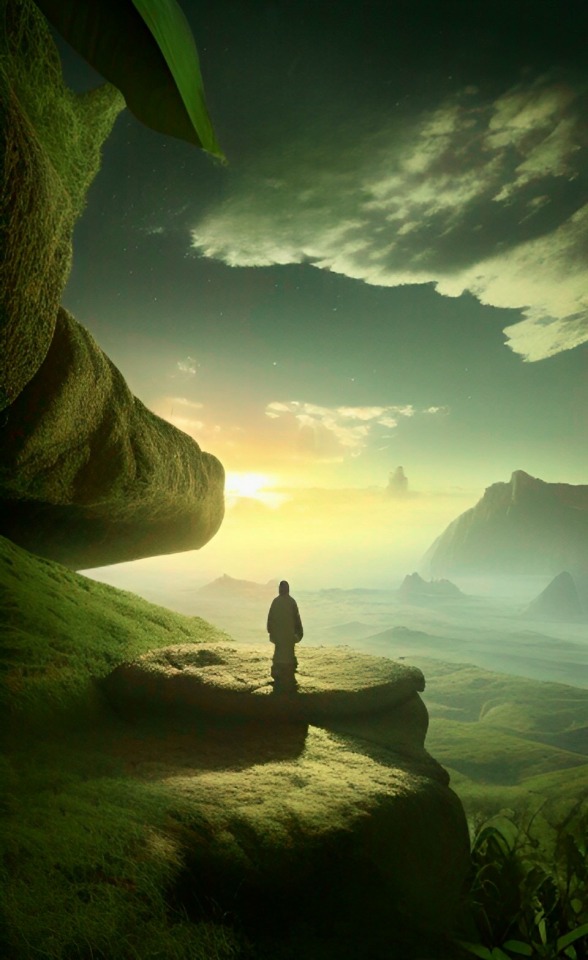
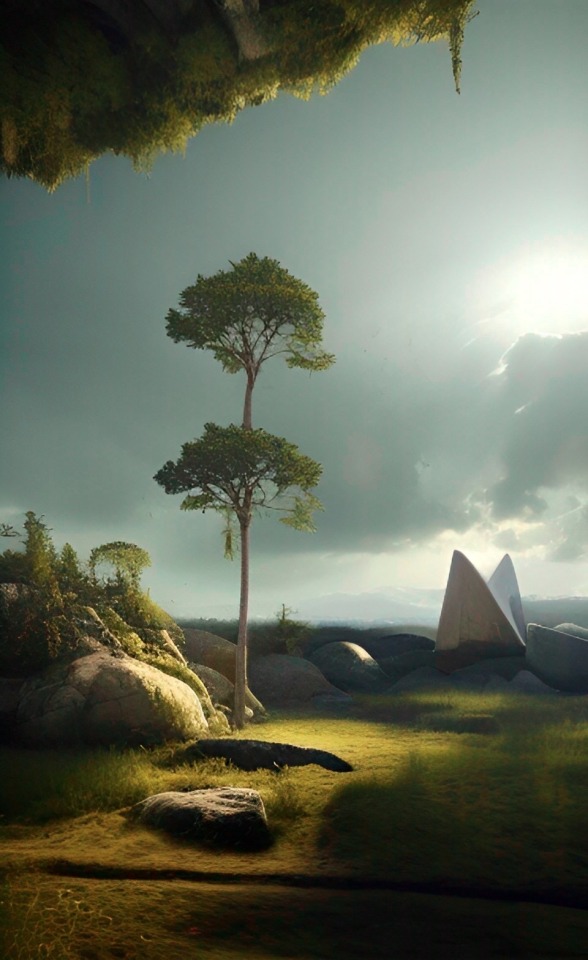
Artist
#art#digital art#dreamscape#landscape#trees#wombo dream#ai#ai art#artist#ai artist#ai artwork#artificial intelligence#ai generated#ai art gallery#ai art community#mightyoakai
8 notes
·
View notes
Text

The mage
6 notes
·
View notes
Text
Juniper’s Massive World-Building Resource List
(Shamelessly cribbed from a dozen different sources)
1. The Checklists
These are the kinds of things that present you with a list of questions about your world, that you then answer as creatively as you want to. I find myself continually having to go back and add to them, because goodness sometimes I just want to write and not think about stuff that isn’t directly relevant to the plot...until it is. And then suddenly I have to think about the ramifications of that.
CRV’s Worldbuilding Checklists (originally from btot.de) - obviously more fantasy-focused Patricia Wrede’s Worldbuilding Lists - a good balance between fantasy and other genres
2. The Masterlist
This link has nearly everything you can think of. It’s not the be-all-end-all, because nothing is, but it’s damn good.
r/Worldbuilding’s Resources List
3. The Visuals
Yes, there’s the ever-present AI-generated images, things such as Artbreeder or Wombo Dream, but sometimes you need something more concrete. Like maps. Or people.
Also, pay artists to make beautiful things whenever you can. AI art is designed to remove the actual humanity from the creative process, and while it’s fine for face claims or inspiration, I would never ever use it as, say, my book cover.
Alsoalso, learn a little something about graphic design. Please. Color theory. Rule of thirds. I beg of you.
Things I have used for maps:
Inkarnate - Browser-based, but almost entirely fantasy-focused
Wonderdraft - Large-scale mapping for countries/continents/worlds
Dungeondraft - Smaller scale mapping that shines when doing smaller areas, especially interiors (both ‘drafts are from the same creator, and are desktop only) There is not, as of yet, a Towndraft, although the community is ravenous for it!
I highly recommend the art packs from Cartography Assets, although if you’re going to use them in a commercially released work, do be a good human and pay the artists for their work! If you want to do sci-fi or modern maps, this is where to get your assets!
Things I have used for people:
HeroForge - A 3D tabletop miniature creator with a vibrant modder community. The free version lets you create as many figures as you want, but their Pro deal lets you organize them into folders, which I absolutely love. It also lets you save specific colors/materials to use across multiple figures, which saves a lot of time when creating folks with a shared uniform. You can even import people/outfits/poses from other figures! I’m told that facial feature modification, clothing patterns, and kitbashing are coming this year! (I’m a little addicted, as you might’ve noticed.) Best on desktop, but you can get a quick “sketch” done on mobile.
Picrew - A truly massive collection of portrait creators. The Discord associated with it is really helpful, in that you can frequently get links to creators that meet your specific requirements, like ‘must have elf ears and POC skin tones’ or ‘must have heterochromia and vitiligo’. This site got me through the roughest parts of 2020. Great for mobile.
Meiker.io - Similar in scope to Picrew, Meiker has a few treasures, including a lot from the now mostly defunct DollDivine, which relied entirely on Flash. There are a few that I return to again and again, but not many. Best on desktop and very easy to create your own creators.
Neka.cc - A Chinese-based site with a lot of similarities to Picrew, although a lot less diversity, both in skin tones and bodies. Great for mobile.
Storior gets an honorable mention because it has a ton of potential, with a lot more options in some respects, but precious few in others. Best on desktop. Can you tell I really love these things?!
4. The Organizers
It helps to have somewhere to store all this information, right? Preferably in an easily accessed database? Perhaps with links or prompts?
These are the ones I’ve used:
World Anvil - Browser-based, incredibly detailed and complex, even for the free version. I found it to be too complicated to figure out, but maybe it’ll be your cuppa!
Campfire - Browser-based, mostly focused on writers, and has a suite of options that you can opt into or out of. This also wasn’t as useful to me, since there’s nowhere to put an outline!
Kanka.io - Browser-based, and just this perfect sweet spot between bare bones and overloaded. There are specific modules you can enable or disable, like in-universe calendars, dice rollers, character journals, etc. It’s my preferred option for organizing my world-building, outside of things like Google Docs.
I also understand a lot of writers like using Scrivener for their work, but as I have Linux, I don’t have any experience with it.
5. The Rest
So, a lot of world-building comes down to how well you know our world. I love world-building because it means I get to use all my education and interests together to create something that feels realistic to my readers and players. This is a time when ADHD is absolutely useful! Chase those squirrels! I can’t tell you how many times I’ve ended up reading an article on, say, rivers, only to end up with an idea for how leylines function in my world!
So here are my top 5 recommendations for figuring out how our world works:
Sociology! - If you want to know how different cultures interact, why certain customs come about, or just how a population reaches a decision, learn about sociology. It’s probably my favorite subject, and most useful to very culture-focused world-builders.
Geology! - If you want to know how your world fits together, what it’s made of, where things like mineral or gem deposits might be or how they might form... in addition to how rivers, lakes, and “strange” geographical features form, geology’s a great place to start.
History! - Okay, maybe this one is cheating, but I can’t tell you how many times I’ve read about something in history and thought “what if it went this way instead?” BAM, there’s a premise for you. (I have an entire novel idea built around that, told mostly through a writer interviewing a famous figure in this alt-history for their biography. After seeing the popularity of Dracula Daily, I almost want to release it like that...)
Ecology! - Oh man, if you want to figure out the botany and zoology of your world, ecology is a great place to start. It builds very nicely off of geology, and covers such a broad range of topics and how each of these pieces interact with one another - like how hydrology affects meteorology affects climate affects plant distribution affects animal distribution... which of course then affects culture!
I’m going to be sacrilegious in the eyes of some of my fellow world-builders here and NOT put linguistics - not because it’s not useful, just because it’s not a field I know much about. Instead, I’d suggest looking at world myths and religions. Yeah, it’s technically part of sociology, but if you’re developing a world from scratch, the creation stories that the sentient species tell themselves can inform a lot of their culture.
For instance, the world that Starcrossed, Amongst the Goblins & the Fishes, and The Silver Hand are all set in is an alternate Earth where magic never left the land. The creation myths in this world are much more centered around humanoids living in harmony with nature, rather than dominating it. In fact, some of the human societies have a specific taboo against desecrating the earth that is taken to such an extreme that other species, like elves and dwarves, occupy that niche instead, acting as stewards of the forest and mountain because they don’t have that same taboo. Part of these myths explain the existence of ley lines, and why they wither and die out (because of excessive logging, destructive farming/mining, or large-scale slaughter of creatures). Will this ever come up in Starcrossed? I highly doubt it. But it figures into the other two VERY prominently.
Phew! That was quite a tangent. Anyway - did I get any of your favorites? Do you have something you’d like to add? Should I make this all a separate page so it’s easy to access and update it regularly? Tell me things! Ask me things! I am an open book and love talking about world-building! Tell me where you’re stuck and maybe we can figure out a way forward together! (Also hmu on Discord, I am so mediocre at Tumblr.)
#worldbuilding#world-building#world building#master list#writing#ttrpgs#dnd#d&d#cartography#heroforge#picrew#neka.cc#meiker.io#adhd has a purpose!#for me it's to assemble all the college majors I started on and never finished#into a nice tidy package#and then inject massive quantities of fantasy or sci-fi into it#also#pay artists what they're worth#ai art is useful ONLY as inspiration#NEVER use it for the final product#even if you're going for a cubist/techno-cultist angle#get a real artist to make real art#before corporations suck even MORE life out of that ecosystem
674 notes
·
View notes
Text
Episode Review: ‘Wizard City’ (Distant Lands, Ep. 4)
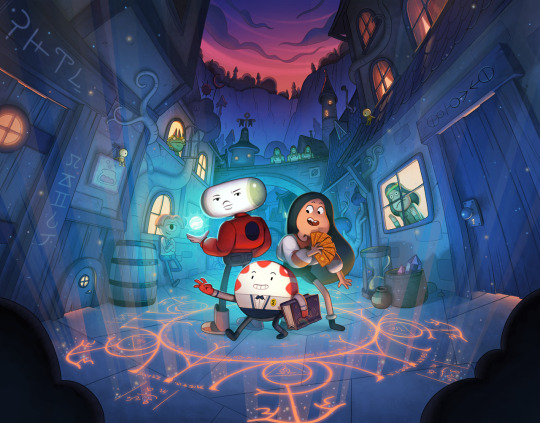
Airdate: September 2, 2021
Story by: Adam Muto, Jack Pendarvis, Kate Tsang, Hanna K. Nyström, & Charley Feldman
Storyboarded by: Maya Petersen, Hanna K. Nyström, Anna Syvertsson, & Aleks Sennwald, & Haewon Lee
Directed by: Miki Brewster & Jeff Liu (supervising), Sandra Lee (art)
An episode focusing on Peppermint Butler’s dark side is something that the fandom has craved ever since the little guy demanded Finn and Jake’s flesh in season two’s “Death in Bloom.” While installments like season five’s “The Suitor” and season six’s “Nemesis” did much to scratch that itch, the story of the Dark One remained mostly unknown…
And after “Wizard City,” it still remains largely unknown. But that’s OK, because instead of focusing on the character’s history, this special focuses on Peps’ quest to relearn magic at a magic school. Put most simply, this special is largely a fun excuse for the show to riff on Harry Potter and The Owl House-style “magic school hijinks,” and it mostly all works.
The special follows Peps quest to go to WizArts (a definite play on CalArts, the school that Pen Ward and Adam Muto, among many others, went to) so that he can relearn magic and once again become one of the greatest dark wizards of his time. Initially, Peps tries to make friends with cool kid Spader and his posse, but once they learn that Peps is not as talented at magic as they had initially thought, they kick him to the curb. It is at this point that Cadebra, Abracadaniel’s adorkable niece who is fascinated with stage magic, enters the picture. Cadebra tries everything in her power to befriend Peps, but Peps pushes back, since she’s not “cool.” It does not matter, though, because both Peps and Cadebra are sorted into the same “house”—the “Skink House—and are forced to work together.
While Peps and his cohort begin learning more and more complex magic, a secret cult of school professors, led by the otherwise caring Dr. Caledonius, are scheming to resurrect Coconteppi, a powerful dark wizard whose putrid heart has been discovered underneath the school excreting a very powerful ichor. The school cult kidnaps Spader and gives him some of the ichor to drink; they hope that because of his talent, he will be able to house the spirit of Coconteppi. This does not go as planned, and Spader is graphically killed (albeit off screen). (In a more humorous moment, Bufo, the scam wizard from season one’s “Wizard,” also ingests some of the ichor, believing himself powerful enough to handle it, but it kills him.)
Eventually Peps and Cadebra learn what is going on. Dr. Caledonius welcomes Peps, believing that he is strong enough to handle the ichor. When Cadebra’s life is put in danger, Peps reluctantly gives the putrid fluid a swig, which infuses him with the power of Coconteppi. Coconteppi-Peps then kills all the cult members before Cadebra manages to remove the ichor from Peps body. For uncovering a heinous plot, Peps is promoted to the highest house, “Salamander,” but he decides to remain a Skink and learn magic “the hard way” with Cadebra as his friend.
As I mentioned near the start of this review, “Wizard City” spends most of its time riffing on the “magic boarding school” trope, with much of the episode feeling like a light-hearted parody of Harry Potter: The characters, after all, are “sorted” into “houses,” they learn various types of magic from skilled “professors,” and they bunk in different parts of a large castle-like campus. Of course, Harry Potter didn’t invent the idea of a boarding school, but when setting your story in a school for magic, it is very hard not to lean at least somewhat into the Hogwarts relation. And this really is a double-edged sword, for while Harry Potter references can be fun here and there, they can also make the overall story feel like a fanfic parody. This special does a good job focusing more so on the characters rather than the setting, but I won’t lie, at times it did feel as if they show was really trying to make you realize it was making a Harry Potter joke.
Of all the characters introduced in the special, the breakout star is easily Cadebra, voiced by Chloe Coleman. Radiating a sort of Mabel Pines energy, Cadebra is the beam of optimism who shines brightly in an otherwise macabre special. There is something about her plucky personality and sense of wacky individualism that charms the viewer. I appreciate how the show compared and contrasted her with her uncle, the one and only Abracadaniel: like her uncle, Cadebra is a good person who wants to help others, but unlike Abracadaniel, she has a sense of courage and fortitude that results in her taking on a Coconteppi-possessed Peps at the episode’s climax. (Say what you will, Abracadaniel stans, but our favorite custodian would never have done that!) Thanks to her bravery and dedication to Peps, Cadebra is easily the heart of the special.
The episode throws an interesting little curveball into the mix by having the ‘ghost’ of Past Peppermint Butler constantly haunt Peps in the here-and-now. Past Peppermint, it seems, was so determined to become a great wizard, he cursed himself, so that if anything were to go awry, his Past self could materialize and set him straight. It’s confusing, but I do think that mixing the “overbearing parent” trope with a curse is a clever idea; it gives the whole special some dramatic heft. The whole setup is made even funnier by the special’s conclusion: After Future Peppermint Butler is ‘defeated’ and the day is saved, Peps reveals to Cadebra that he still wants to be a great and powerful dark wizard… but he wants to earn that power through hard work and determination. (Peppermint Butler might commune with demons, but he would never sell his soul to one for power; Glob helps those who help themselves, ya know?)
One of the special’s strongest points is its background art. Adventure Time always had some beautiful set pieces, and this special goes above and beyond to give WizArts an ancient sense of grandeur and mystery. Ghostshrimp, a freelance artist who was the show’s lead background designer during seasons 1-4, return for this special as a “visual developer”—basically, he mocked up a bunch of rough designs for the locales, and then the episode’s background artists worked up the final pieces in his style. On his podcast, Ghostshrimp mentioned how hectic he found Adventure Time to be, because he was used to taking his time on pieces. As such, the decision to bring him on for just development was smart, as it allowed him to still come up with iconic background designs while also playing fast and loose with everything. Hopefully the show will continue this approach with the Fionna and Cake miniseries that is coming up. After all, Ghosthsrimp’s style is the look of Adventure Time.
Another strong point for the episode is its voice acting. For one thing, you have your regulars like Tom Kenny and Dana Snyder, and Duncan Trussell, who all give a solid performance. But to voice many of the special’s new characters, the show brought on a bevy of fun actors: Saturday Night Live’s Bill Hader, for instance, is now voicing Bufo, and he does a solid job hamming up his role as the old fogey. And then there’s Toks Olagundoye, whose British accent gives Dr. Caledonius a sense of knowledge and expertise. To my delight and surprise, SungWon Cho, an internet personality and voice actor perhaps better known as ProZD, was tapped to voice Brain Wizard, and he does an excellent job. And finally, Anthony Stewart Head, a very talented actor who I know best as Giles from Buffy the Vampire Slayer, voices Con Wizard, and is even given a fun little ditty to sing. I can safely say that the voice acting in this special is likely the best of the bunch, and it’s obvious that the actors were all having a great time playing their parts.
What drags the whole thing down, in my opinion is the excessive murder. (I joked on Twitter that during the climax of “Wizard City,” it felt like I was watching an Adventure Time-ified version of Invincible!) Infused with the power of Coconteppi, Peps goes on a brutal killing spree, boiling Potable Wizard into steam, zapping Dimension Wizard into another plane of existence, smashing Berdzerd, and—perhaps most graphically—excerebrates (had to look that word up!) Brain Wiz. On Twitter, @sometipsygnostalgic argued that while, yes, the scene is startling, it does wonders to transmute “a poor Summer Camp Island knockoff [into] Adventure Time chaos.” The more I think about it, the more I think that’s a fair point; after all, this is hardly the first dark thing that has happened in Adventure Time. But the part that I cannot really stomach is the fact that Spader was murdered for no real reason, and the special ends without anyone really expressing their horror at the situation. Sure, Spader was a schoolyard bully, but he was also a child. And killing a child—either for the drama or the lulz—feels decidedly out of place in an Adventure Time episode. It’s hard to express, but it just felt unnecessarily nihilistic and mean-spirited.
All things considered, I think this was a fun episode, but it was somewhat underwhelming for a ‘finale.’ Much of this is because it had to air after the perfection that was the back-to-back “Obsidian”/”Together Again” wombo combo. But I can’t help but feel like this special just felt a little... off. A little too meanspirited, and it leaned a bit too much on standard tropes. Still, it was a fun spin, and I know that I’ll rewatch it.
Mushroom War Evidence: As Peps rides the bus to school, he passes a bunch of abandoned houses, some of which are buried in the ground. There is an unexploded bomb above the fossilized elephant in the school. Cadebra has a dream that takes place in the ruins of a city.
Final Grade: B+
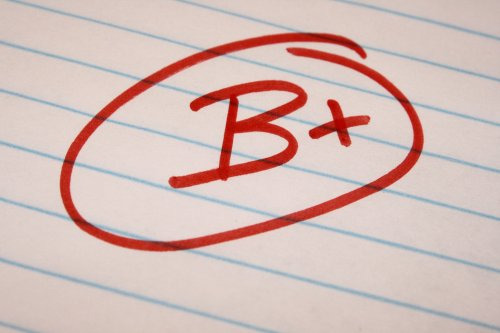
#adventure time#atimers#atdl#distant lands#adventure time distant lands#wizard city#peps#peppermint butler#abracadaniel#Cadebra#Ghostshrimp#Adam Muto#Hanna K#ProZD
78 notes
·
View notes